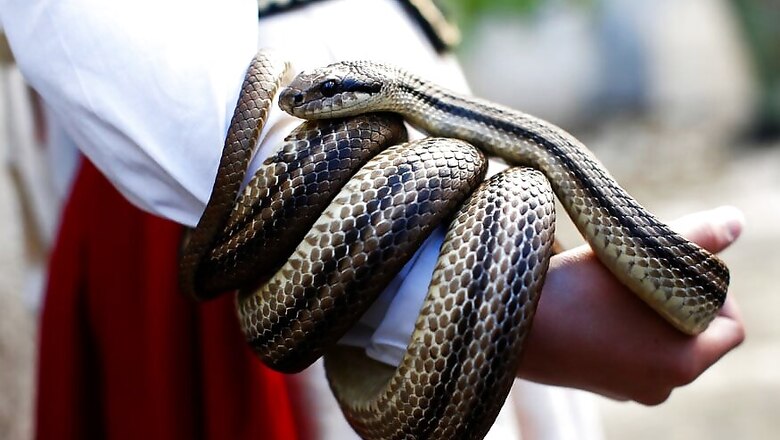
views
The World Snake Day is celebrated every year on July 16 by wildlife enthusiasts across the world to create awareness about the slithering creatures. There are more than 3,000 snake species on the planet, according to National Geographic.
Notwithstanding that only 600 species are venomous, and only about 200 “are able to kill or significantly wound a human,” snakes have acquired a somewhat mythical reputation among human beings. On World Snake Day, here are the five most common myths and misconceptions about snakes.
A bowl of milk will attract snakes
No, it won’t. This is perhaps the most widely-perpetrated myth about snakes. The fact: reptiles can’t digest milk and other dairy products. They are likely to drink milk if they are thirsty or dehydrated.
A snake will stay alive even if its head is cut
Again, it won’t. The myth most likely emerged owing to the fact that a snake’s body will continue to writhe for some time after decapitation.
A snake will avenge its partner’s death
Thanks to Bollywood, you have probably been brought up on the myth that a snake will hunt you down if you kill its partner. Apart from the mating season, snakes like to move around solo. There is no evidence that snakes have some sort of a social bond, intellect or memory to remember human assailants.
All Snakes are Dangerous
They are not. As mentioned already, only a few hundred of the 3,000 snake species are venomous or poisonous, and capable of causing harm to humans.
Bitten by a Snake? Don’t try to suck the poison out
We might have to thank Bollywood movies for perpetuating this myth about snakebites. That is, sucking the venom out from a snake-bit person will save their life. However, when a snake injects venom into a person’s body, it begins to spread quickly. Sucking removes little of the venom, according to a study in Annals of Emergency Medicine.


















Comments
0 comment